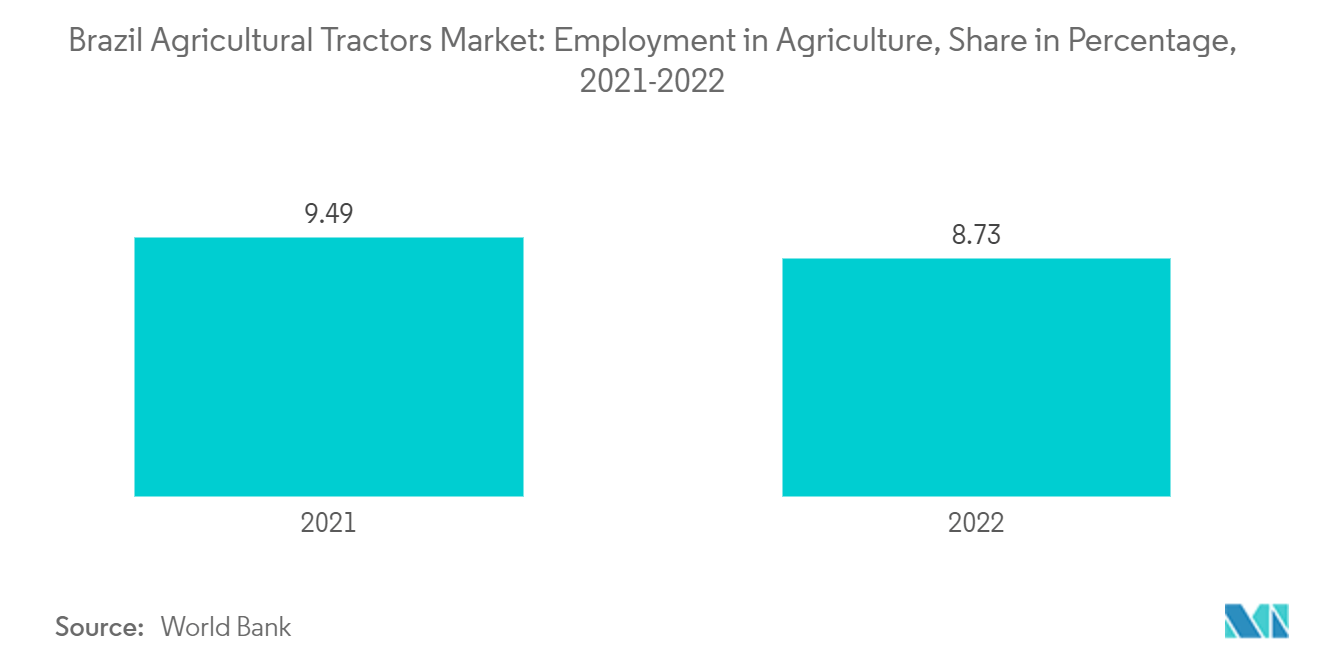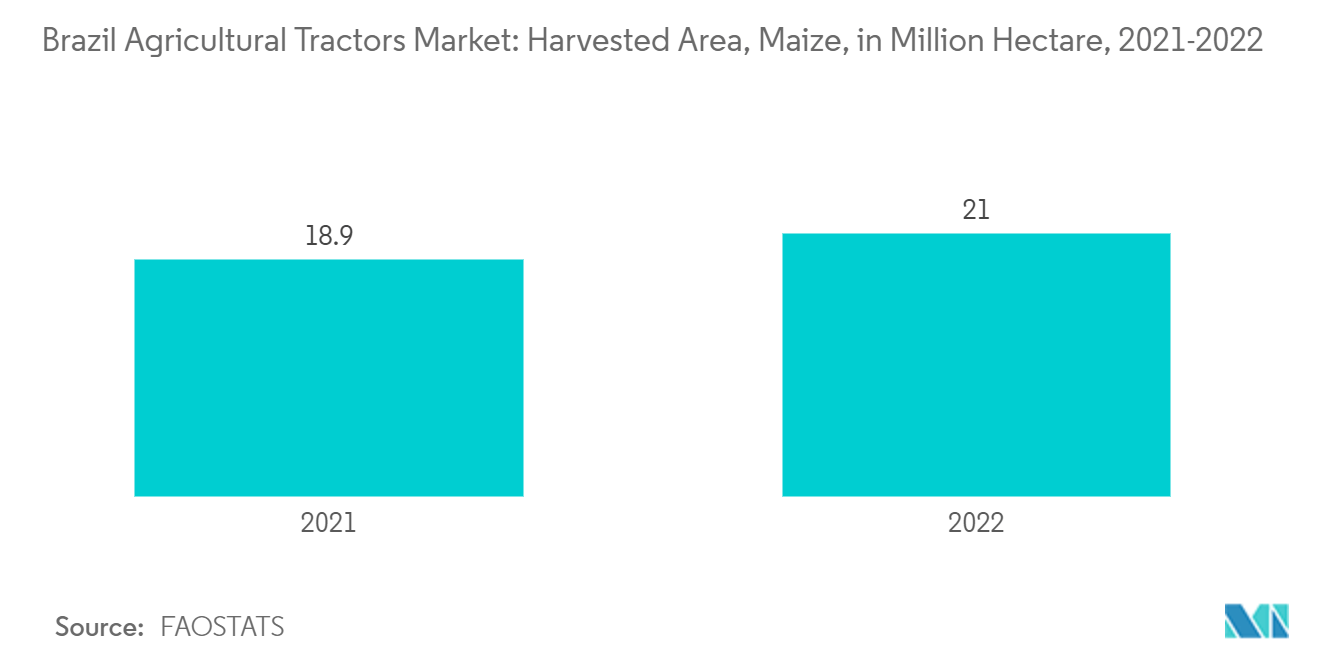Market Trends of Brazil Agricultural Tractors Industry
Labor Shortage Resulting in Farm Mechanization
Farming has traditionally been a highly intensive method in Brazilian agriculture. However, the continually rising real wage of farm labor has positively impacted the demand for tractors in the region, as farmers are increasingly adopting agricultural mechanization, including tractors, as a substitute for manual labor. Compounding this trend, a decline in agricultural employment, as highlighted by the World Bank, dropped from 9.69% in 2021 to 8.7% in 2022. This labor scarcity is nudging farmers toward tractors as a viable alternative to manual labor. Moreover, the average hourly real wage for nonsupervisory hired farm workers has increased over the last few years, which has further instigated the demand for tractors in the country.
Moreover, governments in a number of developing nations are providing subsidies and financial aid to help with the automation of key agricultural processes. Furthermore, as a result of different technical breakthroughs, modern tractors with pre-installed GPS and telematics systems have emerged. The global agriculture tractor market is likely to be driven by the rising popularity of automated tractors, as well as the widespread use of wireless connectivity for remote monitoring, which can be used for agriculture purposes.
Due to technological breakthroughs that are altering farming and agricultural processes, the industry is also gaining attraction. Agricultural tractors with self-driving capabilities are projected to boost productivity and efficiency in the industry. CNH Industrial NV, Escorts Limited, and Deere and Company have all already released concepts for autonomous and electrified tractors.

Row Crop Tractors Dominate the Market
Brazil is the largest country in terms of arable land, one of the top producers of 34 agricultural commodities, and the largest agricultural net exporter. The country is the largest producer of sugarcane and one of the top producers of maize and soybeans. According to FAOSTAT, the production quantity of sugarcane increased from 715.7 million metric tons in 2021 to 724.4 million metric tons in 2022. Furthermore, according to the FAO data, there was an increase in the harvested area of 10.8% and 4.5% for maize and soybeans, respectively, in 2022. The extensive cultivation of these crops drives the demand for row crop tractors in the country.
Manual plowing, harvesting, and other operations are found to be unfeasible and time-consuming. This has led farmers to opt for tractors and other types of machinery to address the challenges, such as cost, accuracy, and shortage of labor. The row-crop tractor is specifically tailored to grow crops that meet all agricultural demands, such as plowing, harrowing, leveling, pulling seed drills, weed control, and running various machines, like water pumps and belt pulley threshers. With the growing demand for power, precision, handling, and efficiency, the development of the modern planter tractor continues to drive the market.
Due to the continuous demand and rising sales growth, in 2023, Mahindra and Mahindra Ltd launched four revolutionary OJA tractor platforms with the mission of global transformation of farming. OJA is Mahindra’s most ambitious global lightweight tractor platform. It was developed in collaboration with Mitsubishi Mahindra Agriculture Machinery, Japan, at an investment of USD 145 million.


